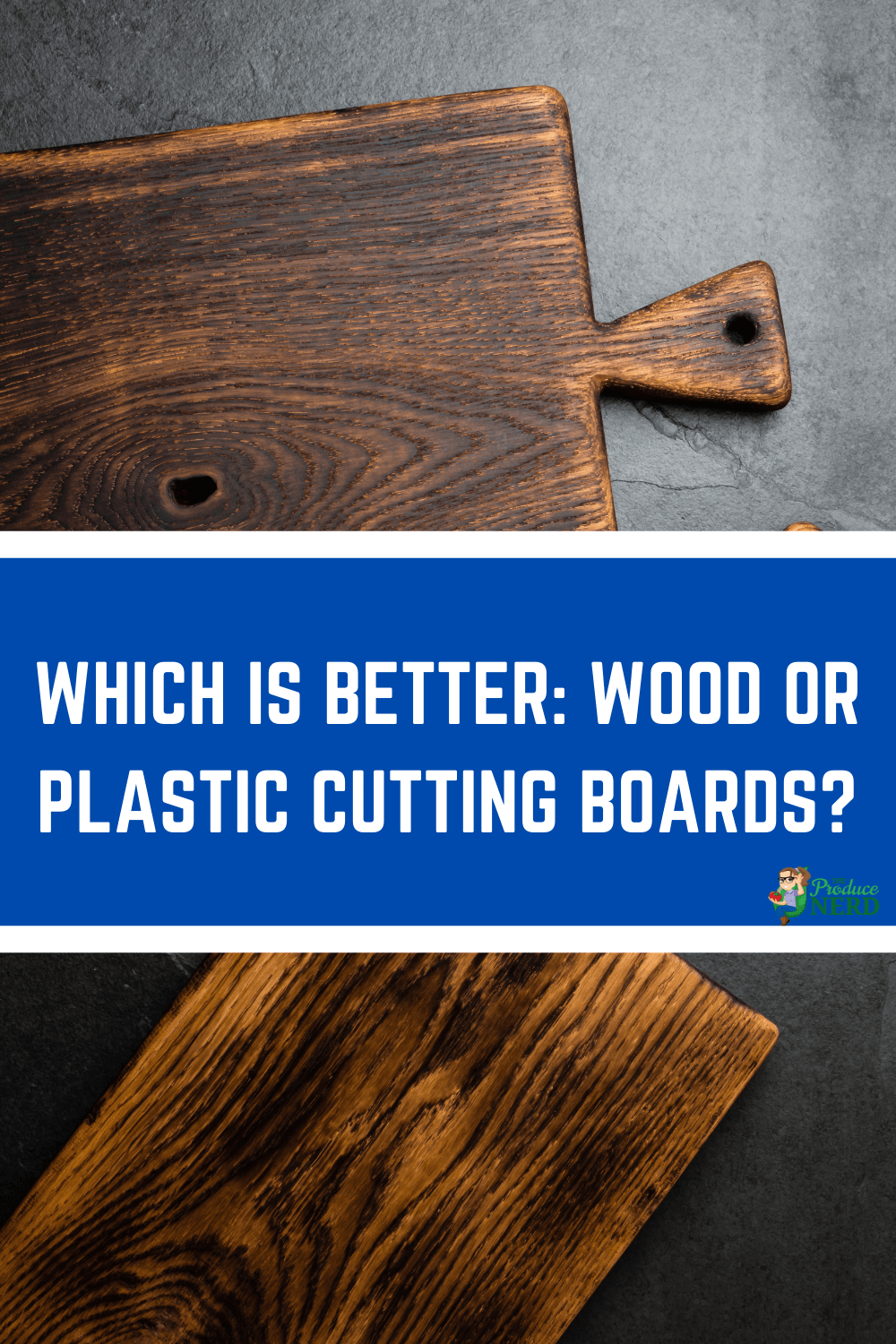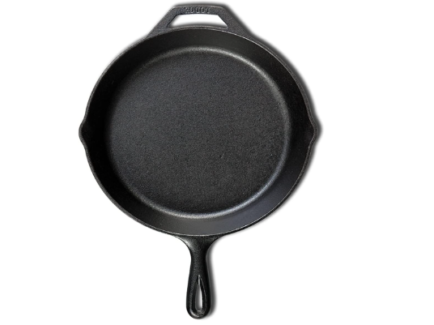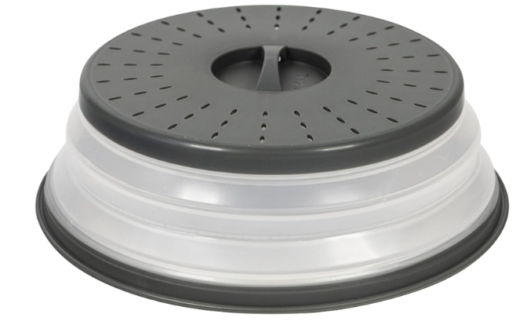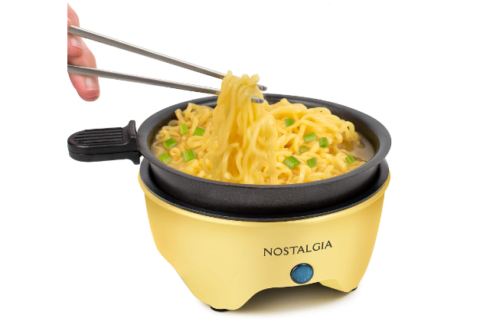A maple cutting board is a type of cutting board...
Read More
While wood is a popular and versatile material for cutting boards, there are some types of wood that are not recommended for use as cutting boards. These woods may be too soft or porous, making them prone to cracking, warping, or harboring bacteria. Using the wrong type of wood for a cutting board can not only damage the board itself but also compromise the safety of the food you’re preparing. In this context, it’s important to know which woods to avoid when choosing a cutting board.
Can I use any wood for a cutting board?
No, not all types of wood are suitable for use as cutting boards. Some woods are too soft, porous, or contain natural oils that can be harmful to humans and animals. It’s important to choose a hardwood that is hard, dense, and non-toxic when selecting a wood for a cutting board.
Maple, walnut, cherry, and birch are popular choices for cutting boards as they are hard, durable, and non-toxic. These woods are also less prone to warping, cracking, and harboring bacteria than other types of wood. It’s important to avoid using softwoods like pine, cedar, spruce, and fir, as they are too soft and porous and can be easily damaged by knives.
In general, it’s best to choose a wood that is specifically marketed as suitable for use as a cutting board or butcher block. These products are typically made from high-quality hardwoods that have been specifically selected for their durability, density, and non-toxicity.
What is an unacceptable material for cutting boards?
There are several types of wood that are considered unacceptable for use as cutting boards due to various reasons. These woods may be too soft, porous, or toxic, making them prone to cracking, warping, harboring bacteria, or contaminating food. Some examples of woods that are not recommended for cutting boards include:
- Softwoods: Softwoods such as pine, cedar, fir, and spruce are too soft and porous, making them prone to damage and bacteria growth. They also have a strong aroma that can transfer to food.
- Tropical hardwoods: Some tropical hardwoods such as teak, rosewood, and ebony are very hard and durable but may contain natural oils that are toxic to humans and animals.
- Reclaimed or salvaged wood: Reclaimed or salvaged wood may contain nails, screws, or other metal hardware that can damage knives and pose a safety hazard.
- Particleboard or MDF: Particleboard and medium-density fiberboard (MDF) are not real wood, but rather a composite material made from wood particles and glue. They are not suitable for cutting boards as they are too porous, not durable, and can release harmful chemicals when cut.
In general, when choosing a wood for a cutting board, it’s important to select a hardwood that is hard, dense, and non-toxic. Some examples of suitable woods for cutting boards include maple, walnut, cherry, and birch.
Is walnut toxic for cutting boards?
No, walnut wood is not toxic for cutting boards. It is a safe and popular choice for cutting boards due to its hardness, durability, and attractive dark color. However, some people may be allergic to the wood dust produced when working with walnut wood, so it’s important to take proper safety precautions when sanding or cutting the wood. Additionally, it’s important to avoid using wood that has been chemically treated or finished with toxic substances, as these can be harmful to humans and animals. When selecting a walnut cutting board, make sure it is made from untreated, food-grade walnut wood that is safe for use in the kitchen.
What are the healthiest cutting boards to use?
The healthiest cutting boards to use are those made from non-toxic hardwoods that are hard, durable, and non-porous. These types of cutting boards are less likely to harbor harmful bacteria and are easier to clean and sanitize. Some of the healthiest and most popular hardwoods for cutting boards include:
- Maple: This is a hard, dense, and non-porous wood that is resistant to bacteria and easy to clean. Maple cutting boards are also less likely to dull knives.
- Walnut: This is a hard, durable, and attractive wood that is resistant to bacteria and safe for food use. Walnut cutting boards are also less prone to warping and cracking than other woods.
- Cherry: This is a hard and non-toxic wood that is resistant to bacteria and easy to clean. Cherry cutting boards are also less prone to staining than other woods.
- Birch: This is a hard and non-toxic wood that is resistant to bacteria and easy to clean. Birch cutting boards are also less likely to warp and crack than other woods.
It’s important to avoid using softwoods like pine, cedar, spruce, and fir for cutting boards, as these types of wood are too soft and porous and can easily be damaged by knives. Additionally, it’s important to avoid using cutting boards made from materials like glass, plastic, or metal, as these can be difficult to clean and can harbor harmful bacteria over time.
What is the most hygenic cutting board?
The most hygienic cutting board is one that is easy to clean, resists bacterial growth, and is replaced or resurfaced regularly to prevent deep grooves and scratches from forming. In general, cutting boards made from non-porous materials are considered to be the most hygienic, as they are less likely to absorb moisture and harbor bacteria.
Among the common types of cutting boards, hardwood cutting boards are often considered to be the most hygienic due to their natural antimicrobial properties and the ability to be resurfaced. However, plastic cutting boards that are made from high-density polyethylene or polypropylene are also considered to be very hygienic and are often preferred in commercial kitchens due to their ease of cleaning and ability to withstand harsh chemicals.
It’s important to note that no matter what type of cutting board is used, it should be cleaned thoroughly after each use and replaced or resurfaced regularly to maintain its hygiene.
What type of cutting board is safest?
When it comes to safety, the most important factor in choosing a cutting board is maintaining a clean and hygienic surface. Both plastic and wood cutting boards can be safe, but there are some differences to consider.
Plastic cutting boards are non-porous and easier to clean, which can help prevent the growth of bacteria. They are also generally dishwasher safe, making them a convenient option for busy kitchens. However, plastic cutting boards can develop deep grooves over time that can harbor bacteria, and they can also be more prone to knife marks that can hold bacteria.
Wooden cutting boards are more porous than plastic, which can make them more difficult to clean. However, some woods such as maple and walnut have natural antimicrobial properties that can help fight bacteria. Wooden cutting boards are also less likely to develop deep grooves, and they are less prone to dulling knives.
Ultimately, the safest cutting board is one that is properly cleaned and maintained, regardless of the material. It is important to wash cutting boards with hot, soapy water after each use and to periodically sanitize them with a diluted bleach solution or other disinfectant.
What are the 2 best types of cutting boards?
The two best types of cutting boards are:
- Hardwood cutting boards: These are cutting boards made from dense and non-porous hardwoods such as maple, walnut, cherry, or birch. Hardwood cutting boards are durable, easy to clean, and less likely to harbor harmful bacteria than other types of cutting boards. They are also less likely to dull knives, making them a popular choice for professional chefs.
- Plastic cutting boards: These are cutting boards made from food-grade plastic materials such as polyethylene or polypropylene. Plastic cutting boards are lightweight, easy to clean, and affordable. They are also dishwasher safe, making them a convenient choice for home kitchens. However, plastic cutting boards can be prone to developing deep grooves and scratches over time, which can harbor bacteria and make them less hygienic than hardwood cutting boards. It’s important to replace plastic cutting boards regularly or to use them only for specific types of food to avoid cross-contamination.
How to choose the best wood for cutting boards
When choosing the best wood for cutting boards, there are several factors to consider, including:
- Hardness: The wood should be hard enough to resist deep grooves and scratches from forming over time, as these can harbor bacteria and make the board more difficult to clean. Hardwoods such as maple, walnut, and cherry are popular choices for cutting boards.
- Durability: The wood should be durable enough to withstand heavy use and regular cleaning without warping or cracking. Dense woods such as teak and acacia are good options for cutting boards.
- Grain pattern: The wood should have a tight, uniform grain pattern that is less likely to trap food particles and bacteria. This is why woods with a closed grain, such as maple and cherry, are often preferred for cutting boards over open-grained woods like oak.
- Antimicrobial properties: Some woods, such as maple and walnut, have natural antimicrobial properties that can help prevent the growth of bacteria on the surface of the cutting board.
- Sustainability: If sustainability is a concern, look for woods that are responsibly sourced and certified by organizations such as the Forest Stewardship Council (FSC).
Overall, hardwoods like maple, walnut, cherry, and teak are excellent choices for cutting boards due to their hardness, durability, and antimicrobial properties.
What cutting board do chefs prefer?
Many professional chefs prefer using hardwood cutting boards, particularly those made from maple or walnut, due to their durability and ability to withstand heavy use. Hardwood cutting boards are also less likely to harbor harmful bacteria than other materials, making them a safer choice for food preparation. Additionally, hardwood cutting boards are less likely to dull knives, which is important for maintaining sharpness in the kitchen. However, some chefs also prefer using plastic cutting boards for certain tasks, such as cutting raw poultry, to avoid cross-contamination. Ultimately, the choice of cutting board comes down to personal preference and the specific needs of the chef or kitchen.
What type of cutting board lasts the longest?
When it comes to durability, some types of cutting boards are more long-lasting than others. Here are some factors to consider when choosing a cutting board that will last:
- Material: Some materials, such as hardwoods like maple and walnut, are more durable than others. Plastic cutting boards can also be long-lasting, but they are more prone to developing deep grooves over time.
- Thickness: A thicker cutting board will generally be more durable than a thinner one, as it will be less prone to warping or cracking over time.
- Quality of construction: A well-made cutting board with strong joinery and a smooth finish will generally last longer than a lower-quality board.
- Maintenance: Proper care and maintenance can help extend the life of a cutting board. This includes regular cleaning and sanitizing, oiling (if applicable), and avoiding exposure to extreme temperatures or moisture.
Overall, a high-quality hardwood cutting board that is properly cared for can last for many years, making it a worthwhile investment for any kitchen.
Are Wood Cutting Boards Safe?
Yes, wood cutting boards are generally safe for use in the kitchen as long as they are properly maintained and cared for. Research has shown that wood cutting boards can actually be more hygienic than plastic boards, as wood has natural antibacterial properties that can help to kill bacteria on the surface of the board.
However, it’s important to note that any cutting board can harbor bacteria if it’s not cleaned and maintained properly. This is why it’s important to wash your cutting board thoroughly with hot, soapy water after each use, and to avoid cross-contamination by using separate boards for raw meat, poultry, and fish.
Overall, wood cutting boards can be a safe and effective tool in the kitchen as long as they are used and cared for properly.
What Qualities Make Wood Unsuitable for Cutting Boards
There are certain qualities that make wood unsuitable for use as a cutting board, including:
- Toxicity: Some types of wood contain natural toxins that can leach into food and cause harm if ingested. Examples include woods like yew, oleander, and poison ivy.
- Porosity: Wood that is too porous can absorb moisture and bacteria, making it difficult to clean and sanitize. This can lead to contamination and the growth of harmful bacteria.
- Softness: Soft woods like pine and cedar can become easily scratched and gouged, creating grooves that can harbor bacteria and make the board difficult to clean.
- Splintering: Wood that splinters easily can pose a risk of injury if small pieces of wood break off during use.
- High tannin content: Woods with a high tannin content, such as oak and teak, can impart a bitter taste to food and can also stain lighter-colored foods.
When choosing wood for a cutting board, it’s important to select a wood that is non-toxic, non-porous, hard, and resistant to splintering. Maple, walnut, and cherry are all popular choices for cutting boards because they have these qualities and are also aesthetically pleasing.
Can Pine Be Used for Cutting Boards
Pine is not typically recommended for use as a cutting board because it is a relatively soft wood that can easily become scratched and gouged during use. These grooves can harbor bacteria and make the board difficult to clean and sanitize properly, which can lead to contamination and food safety issues. Additionally, pine is a porous wood that can absorb moisture and odors, which can also be difficult to remove during cleaning.
If you are looking for a wood that is suitable for use as a cutting board, it is generally best to choose a hardwood such as maple, walnut, or cherry. These woods are harder, more durable, and less porous than softwoods like pine, making them a better choice for cutting boards.
Conclusion
In conclusion, it is important to avoid certain types of wood when choosing a cutting board. Softwoods such as pine, cedar, and fir are not recommended because they are too soft and porous, which makes them prone to developing grooves and harboring bacteria. Other types of wood that should be avoided include those that are toxic, such as woods that contain high levels of natural oils or resins that can be harmful to humans. Some examples of toxic woods include oleander, yew, and poison ivy.
When choosing a wood for a cutting board, it is generally best to choose a hardwood such as maple, walnut, or cherry. These woods are harder, less porous, and more durable than softwoods, which makes them better suited for use as cutting boards. Additionally, they are generally considered safe and do not contain harmful toxins or chemicals. By choosing the right type of wood for your cutting board, you can help ensure that your kitchen remains safe and hygienic, and that your cutting board will last for years to come.
Related Posts
What is the best wood for cutting board?
Wood is a popular material for cutting boards due to...
Read MoreDo Bamboo Cutting Boards Dull Knives?
Bamboo cutting boards are becoming more and more popular in...
Read MoreWhy Trust Us
You will find what you are looking for at Jody's Bakery. From classic to luxury brands, you'll find both. We will help you to select appliances that fit your needs, budget and lifestyle. Whether you want to stop by to learn more — or plan to make a major purchase — we’ll treat you like family and assist you every step of the way. Shop with us today to receive friendly and experienced help along the way.















I thoroughly enjoyed this article. The analysis was spot-on and left me wanting to learn more. Let’s discuss further. Click on my nickname for more engaging discussions.
… [Trackback]
[…] Find More on that Topic: jodysbakery.com/what-wood-not-to-use-for-cutting-boards/ […]
… [Trackback]
[…] Find More Information here to that Topic: jodysbakery.com/what-wood-not-to-use-for-cutting-boards/ […]
… [Trackback]
[…] Read More Information here to that Topic: jodysbakery.com/what-wood-not-to-use-for-cutting-boards/ […]
… [Trackback]
[…] Information to that Topic: jodysbakery.com/what-wood-not-to-use-for-cutting-boards/ […]
… [Trackback]
[…] Information on that Topic: jodysbakery.com/what-wood-not-to-use-for-cutting-boards/ […]
… [Trackback]
[…] There you can find 82326 additional Info to that Topic: jodysbakery.com/what-wood-not-to-use-for-cutting-boards/ […]
… [Trackback]
[…] Here you can find 2448 more Information to that Topic: jodysbakery.com/what-wood-not-to-use-for-cutting-boards/ […]
… [Trackback]
[…] Find More on that Topic: jodysbakery.com/what-wood-not-to-use-for-cutting-boards/ […]
… [Trackback]
[…] Info to that Topic: jodysbakery.com/what-wood-not-to-use-for-cutting-boards/ […]
… [Trackback]
[…] Read More Info here on that Topic: jodysbakery.com/what-wood-not-to-use-for-cutting-boards/ […]
… [Trackback]
[…] Find More on that Topic: jodysbakery.com/what-wood-not-to-use-for-cutting-boards/ […]
… [Trackback]
[…] Find More Info here on that Topic: jodysbakery.com/what-wood-not-to-use-for-cutting-boards/ […]
… [Trackback]
[…] Read More on that Topic: jodysbakery.com/what-wood-not-to-use-for-cutting-boards/ […]
… [Trackback]
[…] Info on that Topic: jodysbakery.com/what-wood-not-to-use-for-cutting-boards/ […]